 |
  |
 |
  |
Chandrabhaga Devi: Truly a Shakti of Maha Maya - Jyothi Raghuram e-mail: jyothi.r.ram@gmail.com August 11, 2021 August 11 is the birth centenary of UK Chandrabhaga Devi, the earliest woman proponent of Bharatanatyam in Karnataka. A commendable, pioneering leap, if one goes back to the early Forties. Her bold, giant step opened the floodgates for dance to be pursued by young girls from respectable families. One pays obeisance to this quiet and dignified Guru, whose steely resolve to step into the dance world was foundational for some of the finest dancers to emerge from Karnataka. She fell in love with the flamboyant U S Krishna Rao, an academic and passionate dancer, and tied the knot to become the first dance couple in the State. The glamour quotient of classical dance, particularly Bharatanatyam with its rich costuming and familiarity in the South, remains a status and culture symbol; some dance classes resemble the functioning of corporate houses, churning out dancers in batches. Classical dance is a celebrated art to pursue, looked upon with admiration, with promising career opportunities. What a distance it has traversed from the devadasi days to present times! Reason enough to deify Chandrabhaga Devi. 
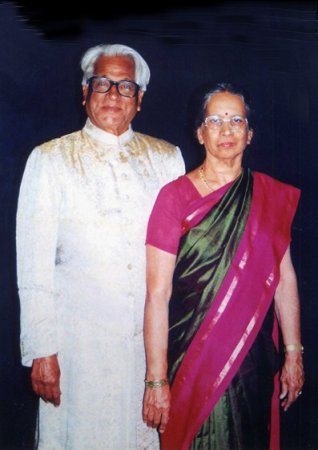
The dance school and the performing space of the Krishna Raos - Maha Maya - in a quiet by-lane of Bangalore, reverberated with music and dance all the time, specially choreographed dance recitals, seminars, and workshops opening up other dimensions of the art. Where did Chandrabhaga fit in, in this colourful, joyous, vibrant set up? One recalls attending several such edifying events at Maha Maya, where Chandrabhaga's presence was unassuming. Yet she was truly the better half, her soberness and understated presence proving a perfect match for the informal, ebullient, and outspoken Krishna Rao. Her strength of personality and inputs to Maha Maya was such that Rao, after her demise in 1997, continued to teach till his last days, more as an offering to her; he was a lost person though, despite the huge family of established dancers that he had. An obvious revolutionary in two ways those days - a love marriage and a professional dance career - Chandrabhaga was yet the quintessential housewife, her maternal instincts drawing generations of students into the warmth of her home, an aspect of her personality that not just dancers of Maha Maya, but even regular visitors such as this writer can vouch for. The Raos' residence doubled as home away from home to their wards; it was art, animated discussions, and sumptuous food and hospitality for anyone who walked into their house. Learning at Maha Maya was akin to a gurukula.  Sheela Rao with her gurus & mother Saroja Rao Sheela Rao, a bright and bubbly dancer of the Raos in the '70s, and one of the busiest performing dancers then, sums it up best: "I can never forget the love they showered on me. My teenage years were mostly spent in their home. I got endless love from them, giving me inner strength and confidence as a person and not just as a dancer. Food was aplenty, cooked by my teacher herself. I used to be introduced to people as their daughter. My years with my dance school are a valuable, memorable part of my life that has helped sustain me through the vicissitudes of life". Sheela's Rathi School of Dance, at Ottawa, Canada, is a proud microcosm of Maha Maya. The dance compositions of the Raos have been retained in their original, taught as part of the fundamentals of learning; Indian festivals are celebrated, complete with traditional attire; weekends turn into a cultural hub to help dancers know something about their roots and heritage. Chandrabhaga's leanings towards abhinaya lent the necessary balance and depth to the choreography of the Raos. Her detailed explanations of a composition, patience, attention to nuances of expression and posture, and individual grooming made for ace performances. Indrani Rehman, Sonal Mansingh, Sudharani Raghupathy and Prathibha Prahlad are among the luminaries of this dance school who have carved an international presence. 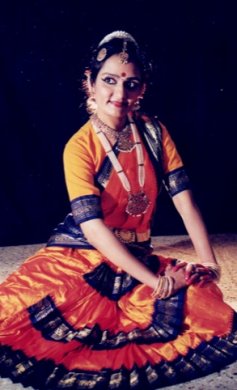 Nandini Mehta Nandini Mehta, co-founder of Narthan Academy of Dance and Music, Bangalore, a teaching institution with a professional performing outfit that has many international outings to its credit, performed her Rangapravesha under the Raos. She was their ward for over a decade, in which period she imbibed much of what has made her successful. "Punctuality, meticulous work culture including maintaining of records of students, performances, newspaper articles, a holistic approach to dance, were central to their life itself, and not confined to their dance. They explored Kannada poetry and choreographed a whole lot of solo items in Kannada. They popularized the art, giving it a huge respectability. They toiled for it, and encouraged other art forms too", she recalls of her alma mater. Chandrabhaga endeared herself to the entire art, literary and scholarly community too; Shrungara, a commemorative volume to mark the golden jubilee of Maha Maya, is replete with writings that affirm her popularity. All these compliments despite her quiet ways! When H N Suresh, Director, Bharatiya Vidya Bhavan, Karnataka, talks about her, it perhaps sums up what Chandrabhaga was, in all her roles. 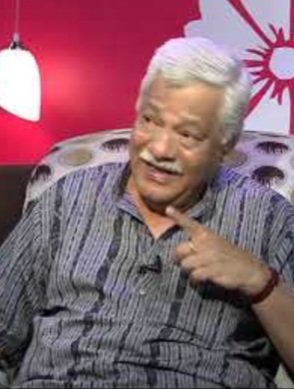 HN Suresh Suresh, a painter known for his deep research on the cosmos and its connection to human life, and bringing them on to the canvas in intelligible way, has been a cultural impresario for decades, newspaper art reviews, felicitation volumes, documentaries, editing of art magazines, writing and publishing books accounting for his large body of work on the culture and literary scene. "Chandramma was a mother to most of her wards. She was modern in her ideas but never gave up tradition. Her punctuality, gentle manner and excellent writing were her other praiseworthy attributes. I still recall her dance in "Sreenatha Mohini Roopa"; she was the only one who could execute it so well". If these were her traits as a woman and a dancer, her professional skills as chairman of the Karnataka Sangeeta Nritya Academy were a revelation. "Veena and venu (flute) utsavas were held during her tenure, accompanied by workshops and seminars. It is unbelievable that during the flute festival at Udupi, cows would come near the auditorium, only to disperse after the concerts. Much academic work was done under her stewardship; Nada Nritya, the monthly magazine of the Academy, was given a facelift, and the focus shifted to take art to the people outside metros", reminisces Suresh, who had a close association with the Raos. His documentary on the dancing couple, made for Doordarshan, is a comprehensive work that stands testimony to their life and times. Suresh was responsible for publishing Shrungara. 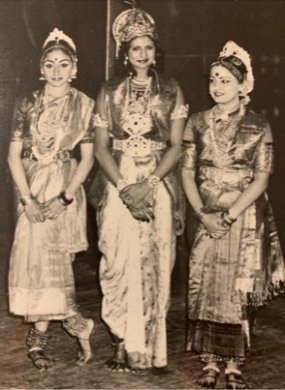 Jyoti Raghuram, Sharada Umesh Rudra as Krishna, Sheela Rao 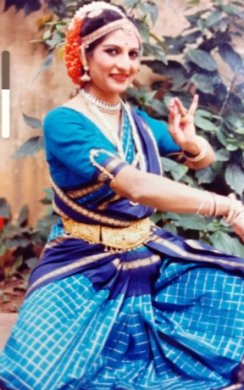 Sharada One of the earliest dancers to share stage with the Raos is Sharada Umesh Rudra, who toured with them, dancing solos too. "|I was 10 years old when I joined their class, and remained with them for the next eight years. I had the privilege of dancing with my gurus. I remember Kama Dahana, where they played Shiva and Parvathi, and I was Kama. They were particular about retaining the Pandanallur style. Dance theory was a compulsory part of our learning. Chandrabhaga was especially good at abhinaya, and she helped us to understand the lyrics before teaching us how to emote. They were like parents to me. Perfection and diligence is what they also passed on to their dancers".  Sujatha Venkatesh Similar sentiments are echoed by Sujatha Venkatesh of the Omkara School of Indian Dance, Geneva, Switzerland."My dance school was my second home where I spent most of my free time. The personal involvement of my teachers was such that they'd call my home to find out why I hadn't attended class on a particular day; their compassion and kindness towards their wards is a cherished memory". Given the times we live in, the past appears inconsequential. Even a decade is thought of as an era of antiquity! To know about the struggles including financial troubles and the subsequent triumph of artistes, has a lesson for dancers; it is an inspiration for tenacity against all odds. Scandals and slurs followed Chandrabhaga Devi for years. Her battle, a torchlight for artistes of all hues, is why we are all here today, as dancers, teachers, or even critics, isn't it? Her foundation is our platform. 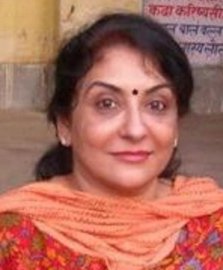 Jyothi Raghuram is a senior journalist and art critic based in Bangalore. Post your comments Please provide your name and email id along with your comment. All appropriate comments posted with name and email id in the blog will also be featured in the site. |